Abstract
Sixteen male patients with stable chronic obstructive airways disease were separated into two groups of eight according to arterial carbon dioxide tensions. Hypercapnia was associated with lower arterial oxygen tensions, higher red cell volume, and increased weight, while normocapnic subjects were decidedly thin. The considerable difference in body weight between the two groups could not be explained by variation in caloric intake, and malabsorption was excluded as a cause of weight loss in the underweight subjects. Serum tri-iodothyronine, thyroxine, cortisol, and oestradiol concentrations were similar and normal in each group, but both groups had significantly low testosterone values as compared with controls, values in the hypercapnic being appreciably lower than in the normocapnic group. The adrenal androgen dehydroepiandrosterone was significantly high in the normocapnic group and low in the hypercapnic group compared with controls. Serum pituitary luteinising and follicle stimulating hormones were normal, but three hypercapnic individuals had high serum prolactin values. Early morning urinary aldosterone values were significantly higher in the hypercapnic than in the normocapnic group. Such hormone comparisons have not previously been made in subjects with chronic obstructive airways disease grouped according to arterial blood gas values, and it is concluded that major alterations in adrenal and testicular function may occur, possibly due to pituitary suppression from hypoxia. Such hormonal changes might in part account for the contrasting alterations in body habitus found in this condition.
Full text
PDF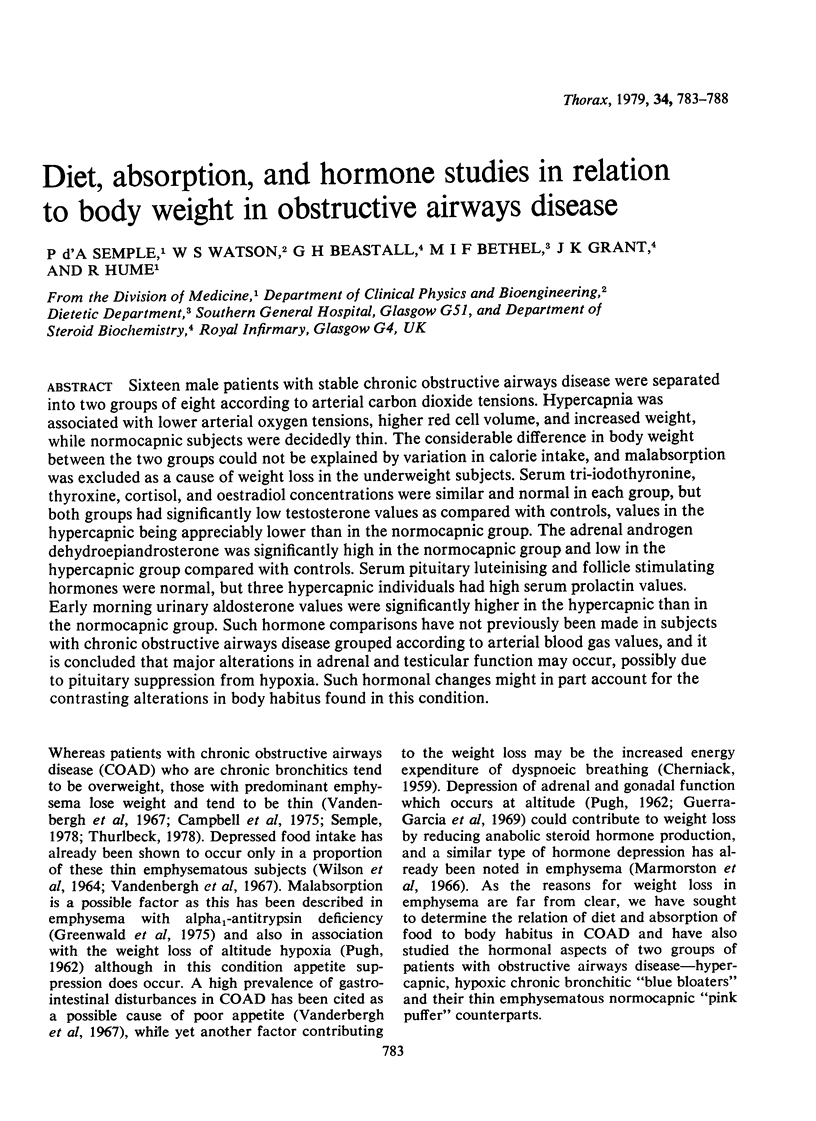
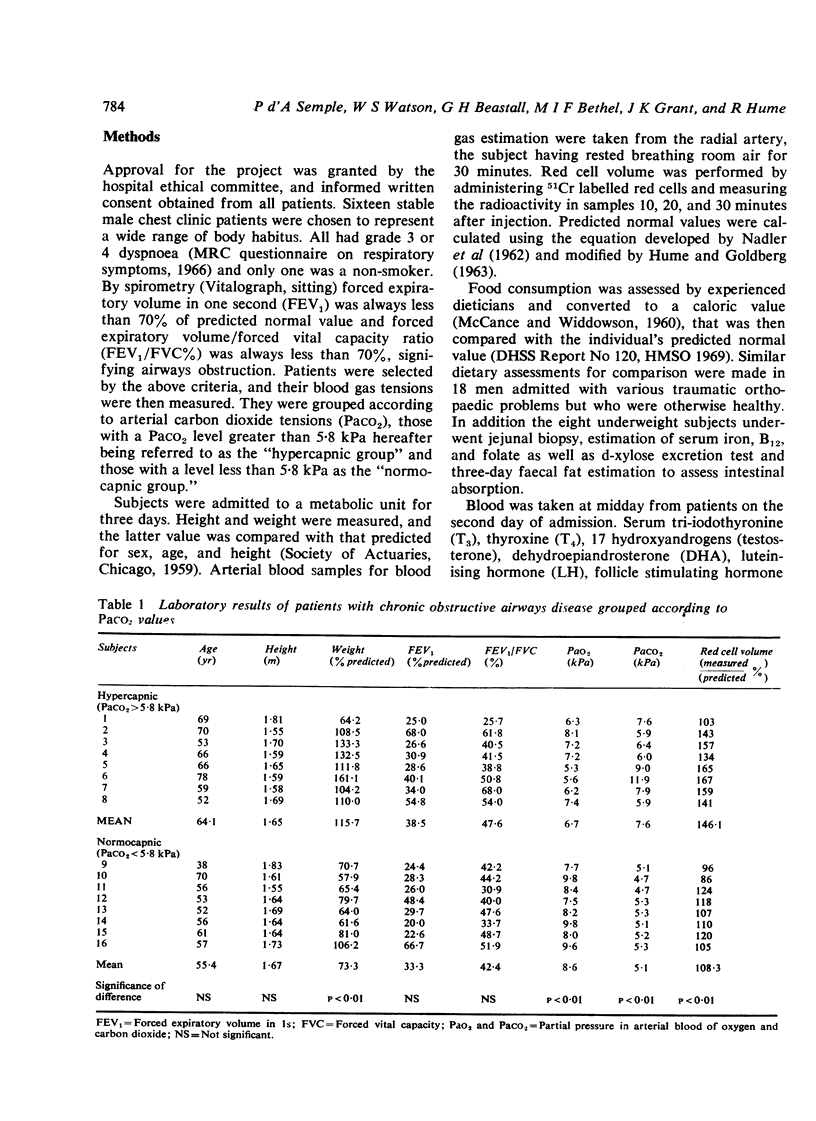
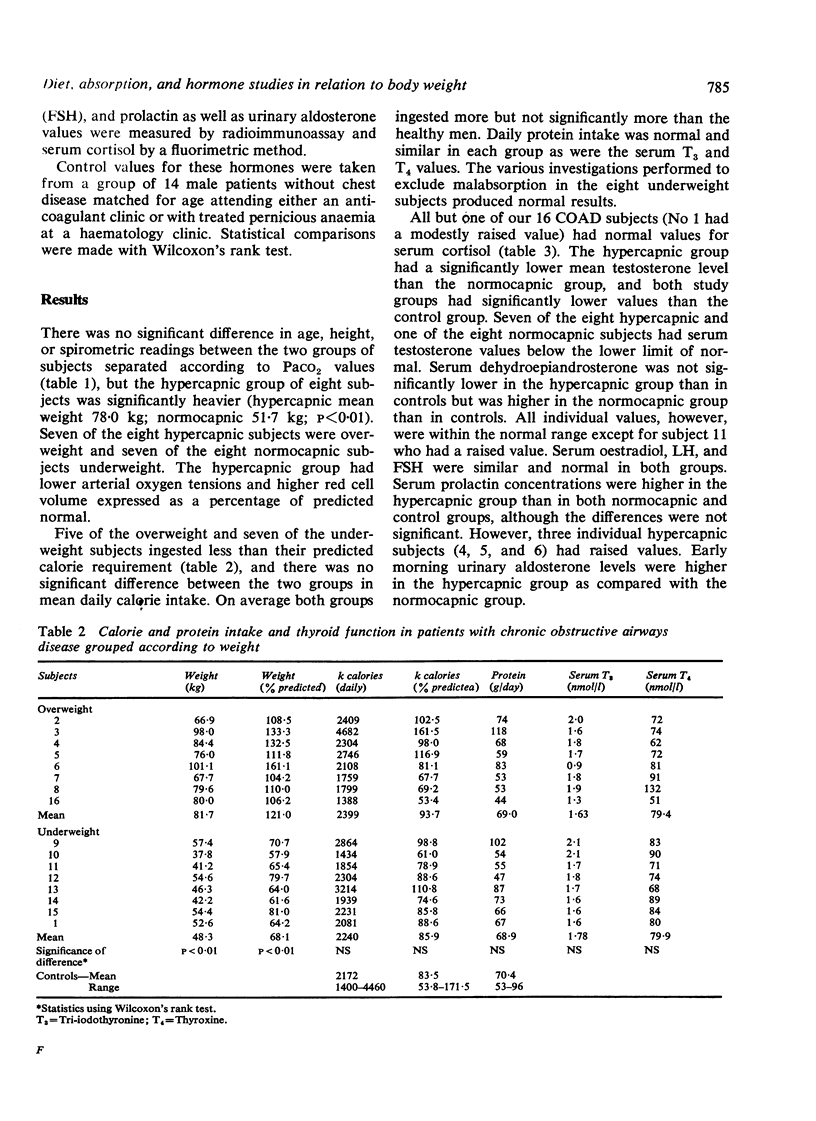
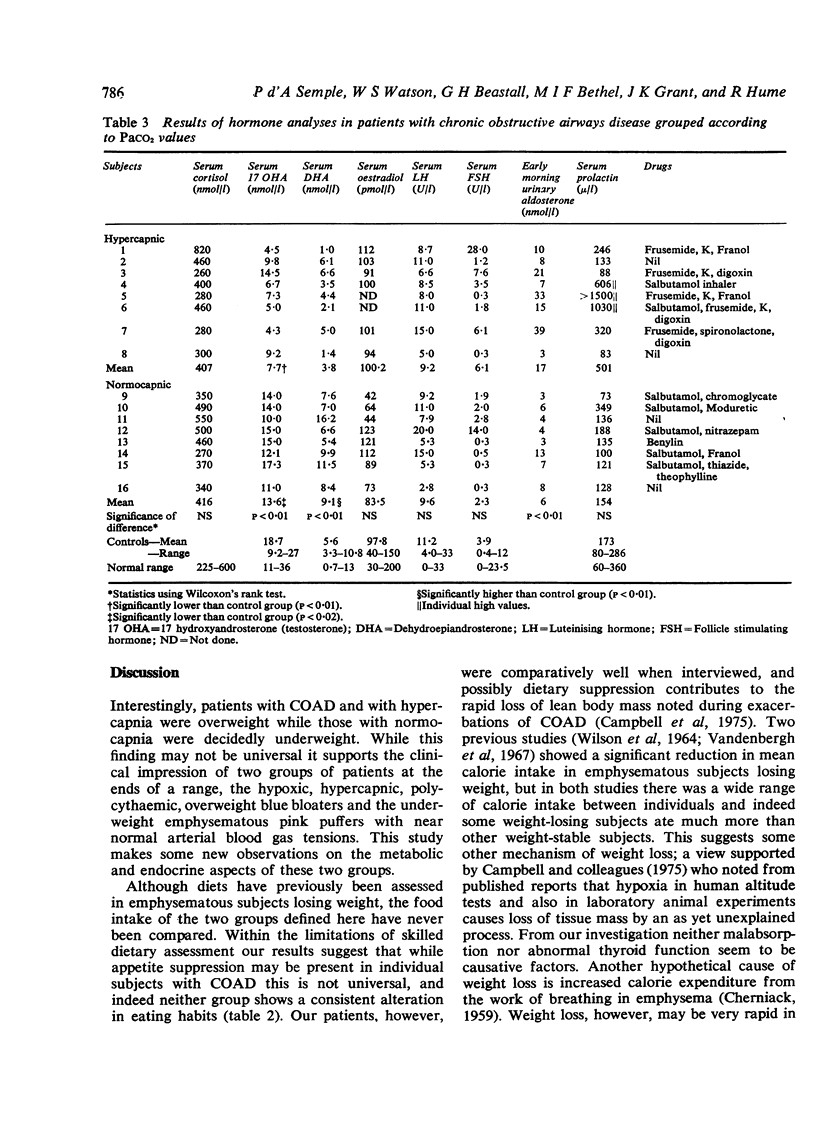
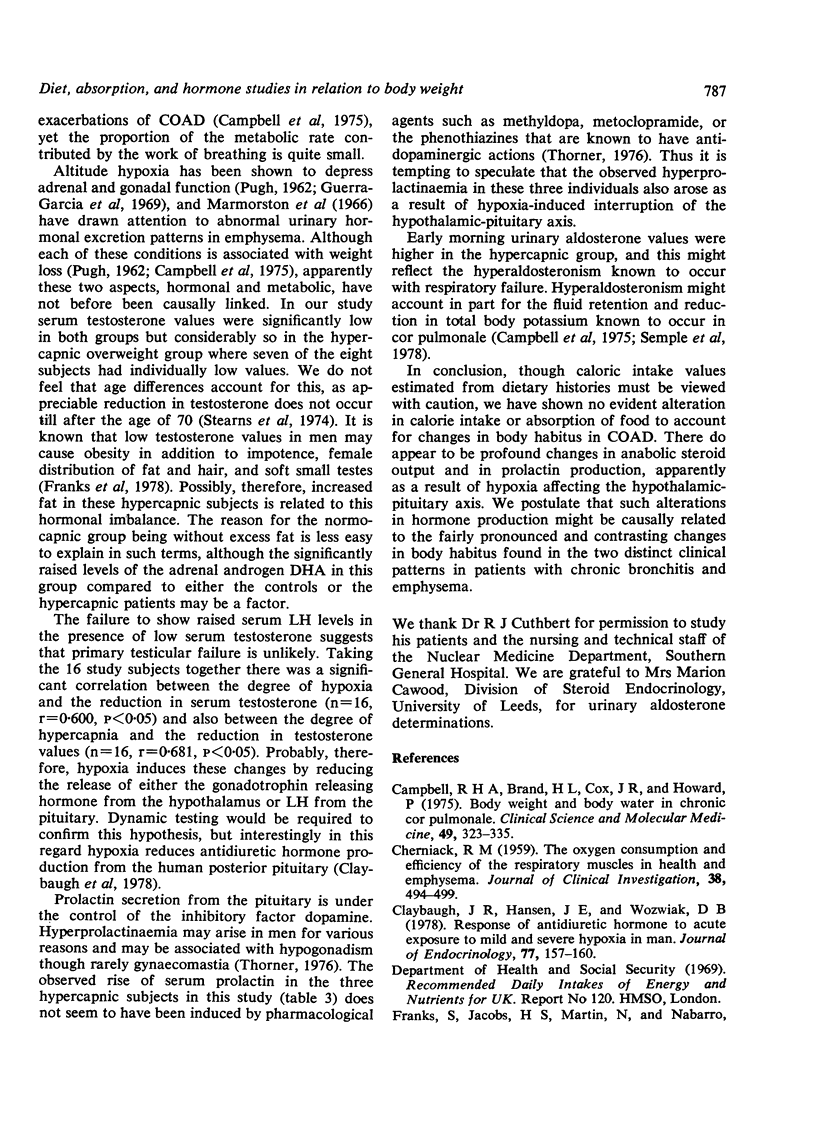
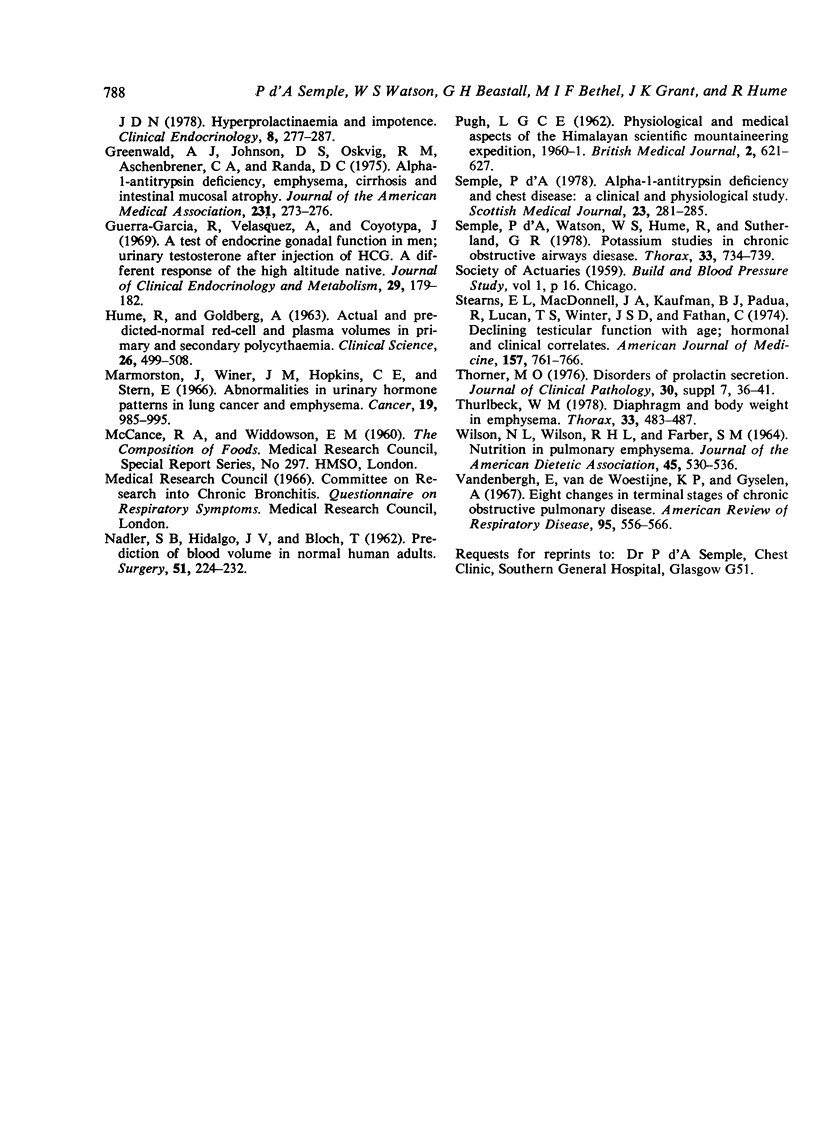
Selected References
These references are in PubMed. This may not be the complete list of references from this article.
- CHERNIACK R. M. The oxygen consumption and efficiency of the respiratory muscles in health and emphysema. J Clin Invest. 1959 Mar;38(3):494–499. doi: 10.1172/JCI103826. [DOI] [PMC free article] [PubMed] [Google Scholar]
- Campbell R. H., Brand H. L., Cox J. R., Howard P. Body weight and body water in chronic cor pulmonale. Clin Sci Mol Med. 1975 Oct;49(4):323–335. doi: 10.1042/cs0490323. [DOI] [PubMed] [Google Scholar]
- Claybaugh J. R., Hansen J. E., Wozniak D. B. Response of antidiuretic hormone to acute exposure to mild and severe hypoxia in man. J Endocrinol. 1978 May;77(2):157–160. doi: 10.1677/joe.0.0770157. [DOI] [PubMed] [Google Scholar]
- Greenwald A. J., Johnson D. S., Oskvig R. M., Aschenbrener C. A., Randa D. C. Alpha-1-antitrypsin deficiency, emphysema, cirrhosis, and intestinal mucosal atrophy. JAMA. 1975 Jan 20;231(3):273–276. [PubMed] [Google Scholar]
- Guerra-García R., Velásquez A., Coyotupa J. A test of endocrine gonadal function in men: urinary testosterone after the injection of HCG. A different response of the high altitude native. J Clin Endocrinol Metab. 1969 Feb;29(2):179–182. doi: 10.1210/jcem-29-2-179. [DOI] [PubMed] [Google Scholar]
- HUME R., GOLDBERG A. ACTUAL AND PREDICTED-NORMAL RED-CELL AND PLASMA VOLUMES IN PRIMARY AND SECONDARY POLYCYTHAEMIA. Clin Sci. 1964 Jun;26:499–508. [PubMed] [Google Scholar]
- Marmorston J., Weiner J. M., Hopkins C. E., Stern E. Abnormalities in urinary hormone patterns in lung cancer and emphysema. Cancer. 1966 Jul;19(7):985–995. doi: 10.1002/1097-0142(196607)19:7<985::aid-cncr2820190712>3.0.co;2-j. [DOI] [PubMed] [Google Scholar]
- PUGH L. G. Physiological and medical aspects of the Himalayan scientific and mountaineering expedition, 1960-61. Br Med J. 1962 Sep 8;2(5305):621–627. doi: 10.1136/bmj.2.5305.621. [DOI] [PMC free article] [PubMed] [Google Scholar]
- Semple P d'A, Watson W. S., Hume R., Sutherland G. R. Potassium studies in chronic obstructive airways disease. Thorax. 1978 Dec;33(6):734–739. doi: 10.1136/thx.33.6.734. [DOI] [PMC free article] [PubMed] [Google Scholar]
- Stearns E. L., MacDonnell J. A., Kaufman B. J., Padua R., Lucman T. S., Winter J. S., Faiman C. Declining testicular function with age. Hormonal and clinical correlates. Am J Med. 1974 Nov;57(5):761–766. doi: 10.1016/0002-9343(74)90850-x. [DOI] [PubMed] [Google Scholar]
- Thorner M. O. Disorders of prolactin secretion. J Clin Pathol Suppl (Assoc Clin Pathol) 1976;7:36–41. doi: 10.1136/jcp.s1-7.1.36. [DOI] [PMC free article] [PubMed] [Google Scholar]
- Thurlbeck W. M. Diaphragm and body weight in emphysema. Thorax. 1978 Aug;33(4):483–487. doi: 10.1136/thx.33.4.483. [DOI] [PMC free article] [PubMed] [Google Scholar]
- Vandenbergh E., Van de Woestijne K. P., Gyselen A. Weight changes in the terminal stages of chronic obstructive pulmonary disease. Relation to respiratory function and prognosis. Am Rev Respir Dis. 1967 Apr;95(4):556–566. doi: 10.1164/arrd.1967.95.4.556. [DOI] [PubMed] [Google Scholar]
- WILSON N. L., WILSON R. H., FARBER S. M. NUTRITION IN PULMONARY EMPHYSEMA. J Am Diet Assoc. 1964 Dec;45:530–536. [PubMed] [Google Scholar]
- d' A Semple P. Alpha-1-antitrypsin deficiency and chest disease a clinical and physiological study. Scott Med J. 1978 Oct;23(4):281–285. doi: 10.1177/003693307802300406. [DOI] [PubMed] [Google Scholar]


